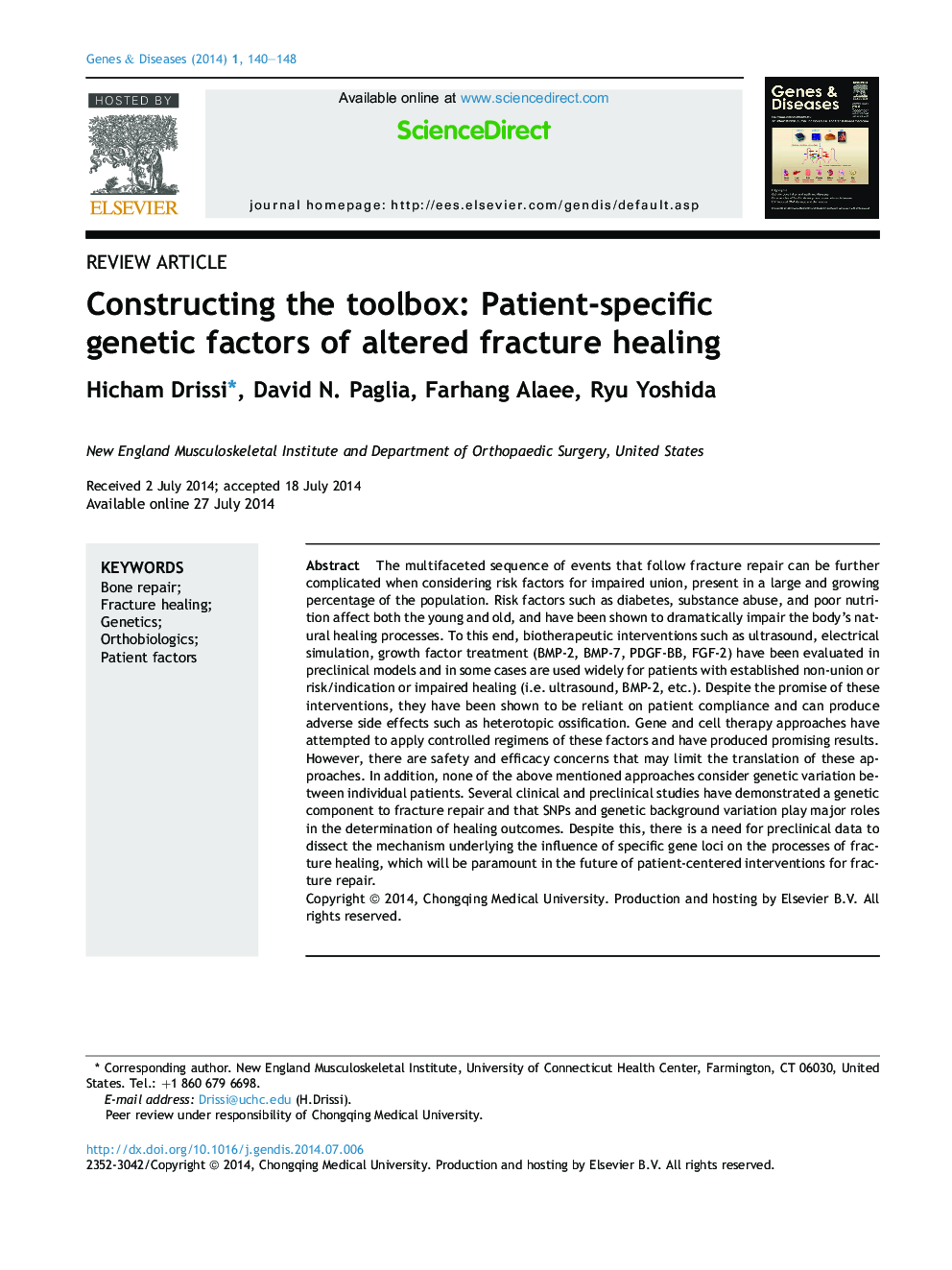| Article ID | Journal | Published Year | Pages | File Type |
|---|---|---|---|---|
| 2182687 | Genes & Diseases | 2014 | 9 Pages |
The multifaceted sequence of events that follow fracture repair can be further complicated when considering risk factors for impaired union, present in a large and growing percentage of the population. Risk factors such as diabetes, substance abuse, and poor nutrition affect both the young and old, and have been shown to dramatically impair the body's natural healing processes. To this end, biotherapeutic interventions such as ultrasound, electrical simulation, growth factor treatment (BMP-2, BMP-7, PDGF-BB, FGF-2) have been evaluated in preclinical models and in some cases are used widely for patients with established non-union or risk/indication or impaired healing (i.e. ultrasound, BMP-2, etc.). Despite the promise of these interventions, they have been shown to be reliant on patient compliance and can produce adverse side effects such as heterotopic ossification. Gene and cell therapy approaches have attempted to apply controlled regimens of these factors and have produced promising results. However, there are safety and efficacy concerns that may limit the translation of these approaches. In addition, none of the above mentioned approaches consider genetic variation between individual patients. Several clinical and preclinical studies have demonstrated a genetic component to fracture repair and that SNPs and genetic background variation play major roles in the determination of healing outcomes. Despite this, there is a need for preclinical data to dissect the mechanism underlying the influence of specific gene loci on the processes of fracture healing, which will be paramount in the future of patient-centered interventions for fracture repair.
